Middle Eastern fruits are those that are widely grown and consumed in the Middle East, which generally includes West Asia (including Iran and Turkey) and Egypt.
While North Africa is distinct from the Middle East, it shares many culinary and cultural ties with this region, so I also include North African fruits in this guide.
Fruits in the Middle East are perfect for raw consumption, cooking, and making beverages. For example, dried dates and cured olives are part of any meal, while pomegranate juice is a universally beloved beverage.
Fruits hold an essential role in Islamic celebrations and events, particularly during the Muslim holy month of Ramadan. Since daytime fasting is a mandatory practice during this period, nutrient-rich fruits serve as convenient snacks at night.
Read on, and you will get to learn about the most well-known 15 Middle Eastern fruits, which span from Mediterranean to tropical fruits. Discover their rich history, culinary applications, and other facts.
Next, I will give you an overview of fruits in the Middle East and provide information on the numerous local dishes and beverages made with fruits. Lastly, I will delve into some popular vegetables in the region.
15 Amazing Middle Eastern Fruits with Filters
Below is a compilation of 15 prominent fruits in the Middle East. I have ranked them in terms of popularity in the region.
With the following filters, you can categorize the fruits according to your preferences. There are labels for native fruits, non-native fruits, national fruits, fruit vegetables, fruits for making dishes, fruits for making beverages, and fruits best for culinary decorations.
Date
- Algeria
- Saudi Arabia
- UAE
- For Beverages
- For Dishes
- For Garnish
- National
- Native
Date, known as “tamr” in Arabic, is a stone fruit deeply rooted in the history of the Middle East. Dating back to ancient Mesopotamia, it is now widely grown from Iraq and Saudi Arabia to North Africa.
There are numerous varieties of dates, like Omani, Ajwa, Deri, and Medjool. Dates range from yellow and amber to reddish or dark brown as they ripen.
Dates boast a chewy texture and a sweet flavor, often described as caramel-like. Both fresh and dried dates are delicious snacks, and they are also popular food ingredients and garnishes.
Beyond nutrition, dates hold significant cultural symbolism, as they are mentioned a lot in Islamic texts. These fruits are rich in natural sugars, offering a nutritious energy boost that is especially appreciated during Ramadan.
Dates and milk are the traditional Middle Eastern first meal when the sun sets in this holy month. Locals also say eating dates before soup or salad enhances the digestive system after a day of fasting.
Fig
- For Beverages
- For Dishes
- For Garnish
- Native
Fig is an important fruit in many Middle Eastern countries, especially those with Mediterranean climates like Turkey, Egypt, Lebanon, Jordan, and Iran. It is among the oldest fruits in the region because its cultivation began at least 6,000 or 7,000 years ago.
The hardy and drought-tolerant traits of figs make them a significant crop in West Asia, where they originated. They grow best in temperate climates and are mainly harvested in late summer.
Studded with crunchy edible seeds, juicy figs have a honey taste with a subtle berry note. Dried figs have a delightful concentrated sweetness and chewy texture, making them suitable as a snack.
In Middle Eastern cuisine, figs are incorporated into desserts, jams, and salads. Locals also utilize them as a natural sweetener in various dishes.
Pomegranate
- Iran
- For Beverages
- For Garnish
- National
- Native
Pomegranate is a popular Middle Eastern red fruit with juicy arils (seeds) and a delicious blend of sweetness and tartness. Indigenous to West Asia, particularly Iran, it holds a storied place in the region’s history and mythology.
Pomegranates thrive in Mediterranean climates and are harvested in the fall. With its crown-like top and spherical shape, pomegranates are a symbol of fertility in many Middle Eastern cultures, hence their presence in many local weddings.
There are many pomegranate varieties in the region. For instance, the Red Acco from Israel ripens in the late summer with soft seeds, while the Eversweet and Liffani Sweet from Lebanon boasts soft seeds and a sweet taste.
Pomegranate arils are ideal for consuming raw, garnishing dishes, and making juices. Pomegranate molasses is a common seasoning for marinade and salad dressings in the Middle East.
Grape
- Turkey
- For Beverages
- For Dishes
- National
- Native
Grape is a common fruit in the Middle East. The number of grape varieties is enormous, ranging from soft and juicy grapes to crunchy and sour ones, not to mention the diverse color palette that includes red, green, purple, black, and more.
Many Middle Eastern countries with the Mediterranean climate cultivate grapes on a large scale, namely Turkey, Iran, Syria, Israel, Lebanon, and Jordan. Turkey and Iran are among the world’s biggest grape producers.
Interestingly, the Middle East has a long wine-making tradition that spans thousands of years. Although Islam is the predominant religion in the region, several countries permit the production and consumption of grape wine to varying degrees.
Besides the widespread use in making wine, grapes are enjoyed fresh or dried as raisins, which is a ubiquitous ingredient in local baked goods, rice dishes, and many other platters.
Orange
- For Beverages
- For Garnish
- Non-Native
Orange is a beloved citrus fruit in the Middle East since locals dearly love its vibrant color and sweet, juicy taste. Originating in ancient China, it made its way to the region via trade routes in the 10th and 11th centuries.
Oranges thrive in areas with a Mediterranean climate, such as Turkey, Iran, Egypt, and Israel. Their season occurs in cooler months, from November to February.
The Jaffa orange, locally termed “Shamouti,” is a variety famous for its uniquely oval shape, deep orange hue, tough skin, and sweet yet subtle flavor. There are two other prominent orange varieties from this region: the Navel and the bitter orange.
People in the Middle East love eating fresh oranges, drinking orange juice, and using the fruit in various dishes, from salads to desserts. In addition, orange blossom water is a must-have flavoring in many sweets and pastries.
Apricot
- For Beverages
- For Dishes
- Native
Apricot is a Middle Eastern stone fruit with peach-like sweetness and a slight tang, and its pale yellowish-orange color can brighten any day. Its succulent flesh covers a seed under the soft, velvety skin.
Apricots had long been cultivated in Persia before they spread to the rest of the Middle East. Today, they are mainly available in the temperate and Mediterranean zones, and Turkey, Iran, and Algeria are the region’s most significant producers.
Ripe apricots are delicious on their own, but dried apricots, with a concentrated sweetness, are even more flavorful. Both are used in making several dishes and drinks in Middle Eastern cuisine.
Olive
- For Dishes
- Fruit Vegetables
- Native
Olive is an enormously important fruit in the Middle East. While unsuitable for raw consumption, it is an essential food ingredient and source of cooking oil.
Native to the Mediterranean, olives are mainly present in countries with the Mediterranean climate, namely Turkey, Syria, Lebanon, Israel, and Tunisia.
Raw olives are small, oval-shaped fruits with smooth, dark green or black skin. They are very hard and bitter, but a nice bath in salt or brine mellows them down, and pressing them for olive oil is another way of processing olives.
Olives and olive oil are staple ingredients in many Middle Eastern dishes, including salads, meze platters, and stews. Both are mentioned numerous times in the Quran.
The Souri olive variety is the most commonly cultivated. It is well known in Lebanon, Israel, the West Bank, the Gaza Strip, and Jordan.
Lemon
- For Beverages
- For Dishes
- For Garnish
- Non-Native
Lemon is among the most beloved citrus fruits in the Middle East. It originated in modern-day India and the neighboring areas and was introduced to Arab cuisines in ancient times via Persia.
Lemons thrive in the region’s subtropical climates in Turkey and Iran, among many others. Some Middle Eastern countries, like Saudi Arabia and the UAE, are significant lemon importers.
In the Middle East, lemons sport a pointed end and have a thin, aromatic skin covering their juicy, acidic flesh. Locals use their juice and zest in various dishes, especially salads and dips.
In addition, lemonade is among the most popular beverages in the region.
Watermelon
- For Beverages
- For Garnish
- Native
Watermelon is a berry fruit with a long history in the Middle East. Indigenous to Africa, it was grown in Egypt at least 4000 years ago before spreading to other parts of the world.
Since watermelons love warm climates, they are a common sight in many Middle Eastern countries, especially in the summer. Their hard green rind is a sight for sore eyes, and their juicy, sweet red flesh interspersed with black seeds is a delight for thirsty mouths.
With up to 92% water content, watermelons are ideal for juicing and serving fresh. A pairing of watermelon slices and cheese is a delicious savory-sweet combination for the first course.
Mulberry
- For Beverages
- Native
Mulberry is a popular Middle Eastern fruit with an oblong shape, tender texture, and a mellowly sweet flavor. It grows in clusters and is perfect for eating fresh, juicing, and making desserts.
Mulberries come in three main varieties: white, red, and black mulberries. The last one originated in West Asia and the broader Middle East.
Interestingly, black mulberries are often considered the best variety. Turkey and Iran are major suppliers of mulberries for Europe.
Tamarind
- For Beverages
- For Dishes
- Non-Native
Tamarind is a tropical fruit deeply integrated into Middle Eastern cuisine and culture. Though endemic to Africa, it was brought to the region thousands of years ago through trade, initially arriving in Egypt.
Each tamarind is encased in a brown, brittle, pod-like shell with a sticky, fibrous pulp inside. This pulp boasts a sour and slightly sweet taste that is highly valued in both savory dishes and sweet beverages across the Middle East.
In particular, tamarind pulp is perfect for marinade and meat-based stews since its acidity helps tenderize the meat and infuses the other ingredients with a tasty mix of sweetness and tanginess.
Guava
- For Beverages
- For Garnish
- Non-Native
Guava is a tropical fruit that has found a special place in the Middle East. It hails from the Americas and is a relatively recent addition to the region’s fruit offerings, yet locals are already madly in love with this fruit and its related products, such as guava juices and fruit salads.
Guavas offer an inviting flavor of sweetness and tropical tartness, whether eaten raw or used in fresh juice, jams, preserves, marmalades, and candies. Their crisp flesh, hidden under green, slightly bumpy skin, is another pleasure to please.
Initially green, guavas often ripen into colors of yellow and almost maroon. While its aroma is like a lemon, the pale pink or white flesh and juice are mildly sweet.
Plum
- For Dishes
- Native
Plum is a drupe that has been a part of Middle Eastern agriculture for millennia. Its season typically stretches from late spring through early autumn, producing fruits with various colors, from yellow and green to deep purple.
However, the Janerik variety, also known as the sour green plum or Persian green plum, is the most well-known name. This fruit is pickled when it is still unripe so that its firm and crunchy flesh boasts a deliciously tart flavor.
The Blue Damson plum is another famous variety in the Middle East, with smaller, oblong-shaped fruits cloaked in deep purple to black skin. Its spicy, tart, amber-like flavor is quite unique!
Both fresh plums and prunes (dried plums) have many applications in regional cooking traditions.
Muskmelon
- For Beverages
- Native
Muskmelon is a type of fragrant melon widely enjoyed in the Middle East for its sweet and refreshing taste. It was first cultivated in what is now Iran and eventually became popular throughout the region.
When sliced open, a muskmelon often gives off a musky aroma, which wafts away from the creamy orange flesh beneath the smooth, wrinkled, or ribbed rind. This flavor profile makes it an ingredient for Middle Eastern summer salads, desserts, and beverages.
Today, the Ananas variety is a Middle Eastern favorite, partly because of its impressive weight, which can reach anywhere between 6.6 and 8.8 pounds! But what makes it really stand out is its creamy white flesh with a sweet flavor and a tropical, pineapple-like aroma.
Quince
- For Beverages
- For Dishes
- Native
Quince is a pome fruit that has long been grown in the Middle East, especially in countries along the Mediterranean coast. Its main producers in the region include Turkey, Iran, Morocco, and Algeria.
An immature quince is green and has dense gray-white fine hair, whereas a ripe one offers a bright golden-yellow shade with an aromatic scent. The hard texture and the tart, astringent taste make quinces hard to eat in their raw firms.
Therefore, people always cook quinces or turn them into marmalade, jam, paste, or alcoholic beverages. In the Middle East, locals traditionally prepare them with meat to make hearty stews.
I have just gone through the most well-known fruits in the Middle East. What do you think they have in common? Read on to discover the answer!
I have just gone through the most well-known fruits in the Middle East. What do you think they have in common? Read on to discover the answer!
What Makes Middle Eastern Fruits Special?
Below are the main factors that shape and define fruits in the Middle East.
Diverse Climate
The Middle East spans a vast area with climates ranging from the fertile lands of the Levant to the arid deserts of the Arabian Peninsula and the sunny Mediterranean coast.
This diversity allows for a wide variety of fruits to be grown, from citrus fruits and olives in the Mediterranean areas to dates and pomegranates in the more arid zones.
Nevertheless, fruit crops that tolerate droughts and hot, arid environments are still the most suitable options, hence the popularity of dates and figs.
Cultural Significance
Many fruits have deep-rooted cultural and religious significance in the Middle East. They were mentioned in Islamic texts and are often associated with Muslims and Ramadan celebrations.
Culinary Uses
In the Middle East, fruits are not only consumed fresh but are also used extensively in cooking, baking, making desserts, and, most importantly, beverages.
Due to the limited number of alcoholic beverages, fruit-based alcoholic-free drinks are highly sought-after in the region.
Due to the seasonality of many fruits and the hot climate, Middle Eastern cultures have developed various preservation techniques, especially drying.
Are you interested in the culinary applications of Middle Eastern fruits? The next section will tell you more about this topic.
What Are the Middle Eastern Dishes That Utilize Fruits?
Among the many dishes available in the rich cooking tradition of the Middle East, the following options are those prepared with fruits.
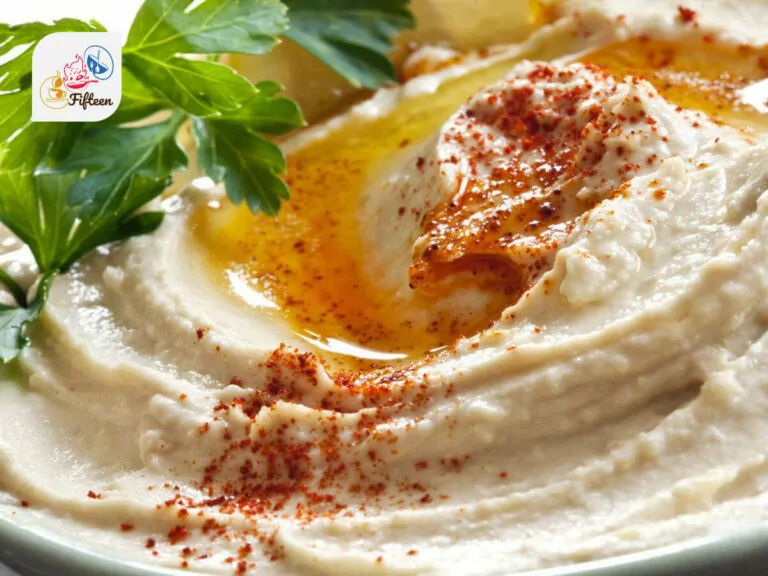
Hummus
Hummus is a creamy Middle Eastern spread or dip made from mashed chickpeas, tahini (sesame paste), lemon juice, garlic, and olive oil.
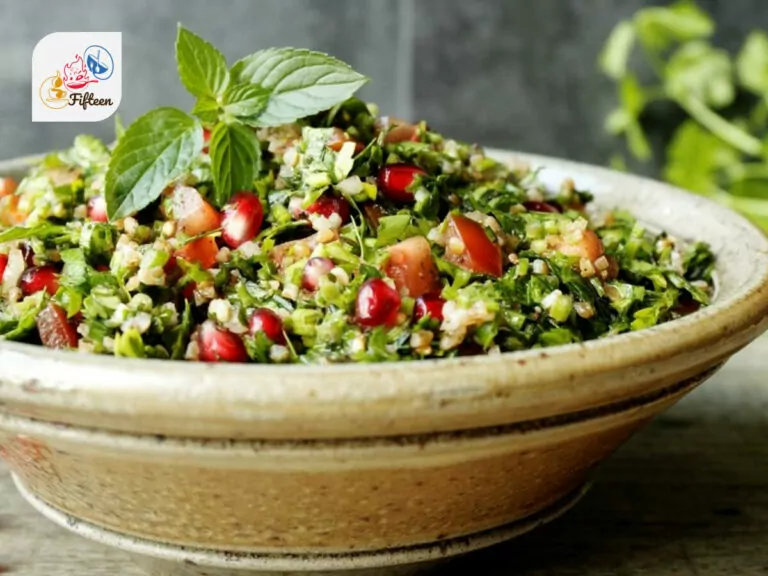
Tabbouleh
Tabbouleh is a Middle Eastern vegetarian salad consisting of finely chopped parsley, mint, tomatoes, onions, and bulgur (cracked wheat), all dressed in a mixture of olive oil and lemon juice.
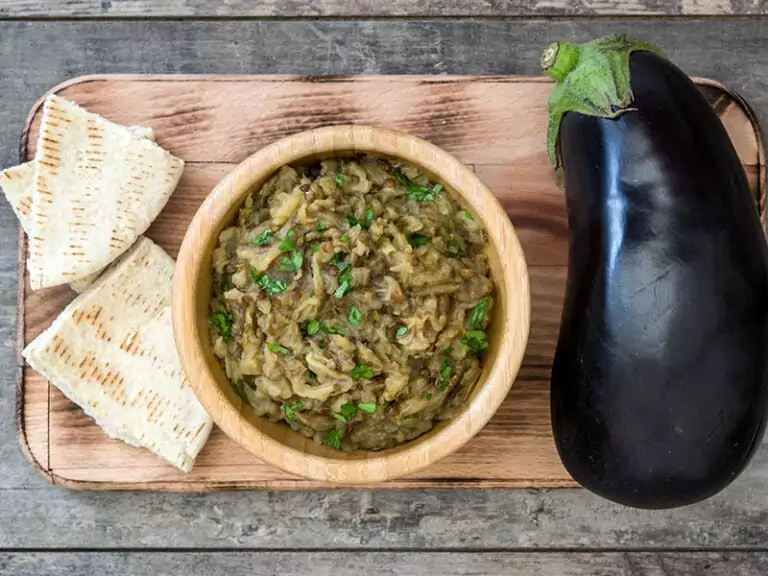
Baba Ghanoush
Baba ghanoush is a traditional appetizer made from roasted eggplant, tahini, olive oil, lemon juice, and various seasonings in many Middle Eastern countries.
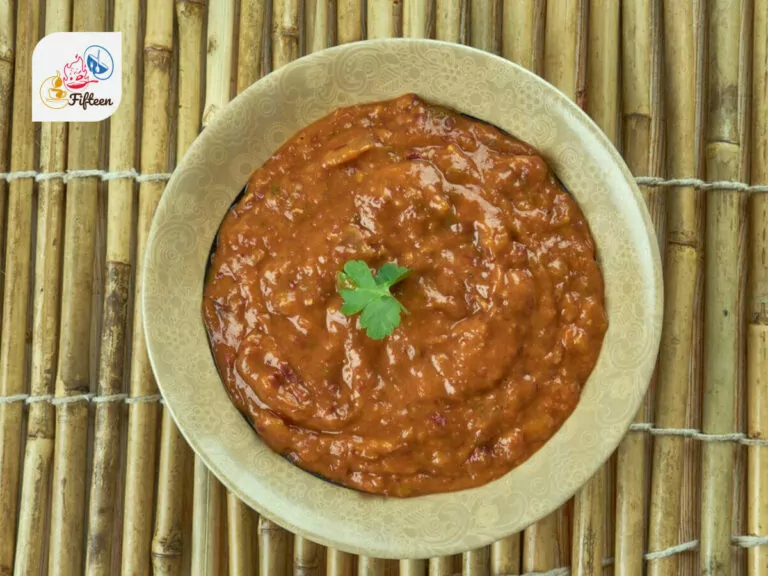
Ful Medames
Ful medames is an Egyptian dish of cooked and mashed fava beans seasoned with olive oil, lemon juice, and various herbs and spices.
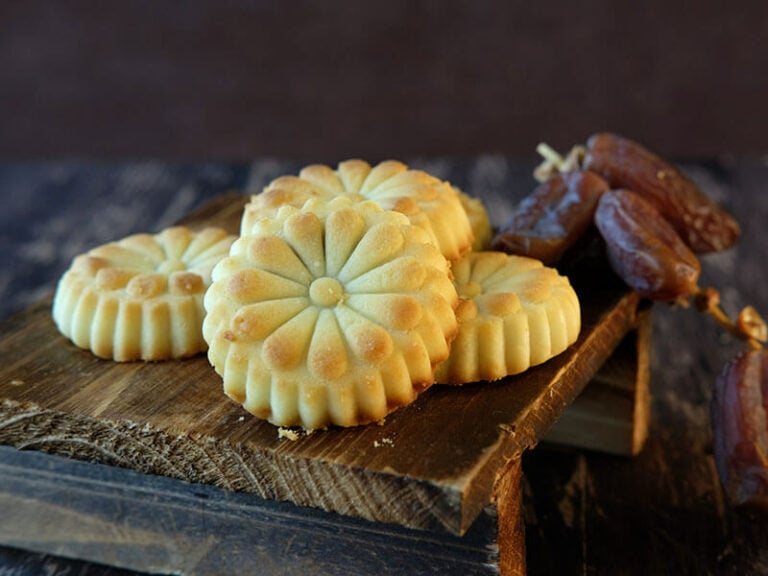
Ma’amoul
Ma’amoul are traditional Middle Eastern butter cookies filled with a sweet paste made from dates, pistachios, or walnuts.
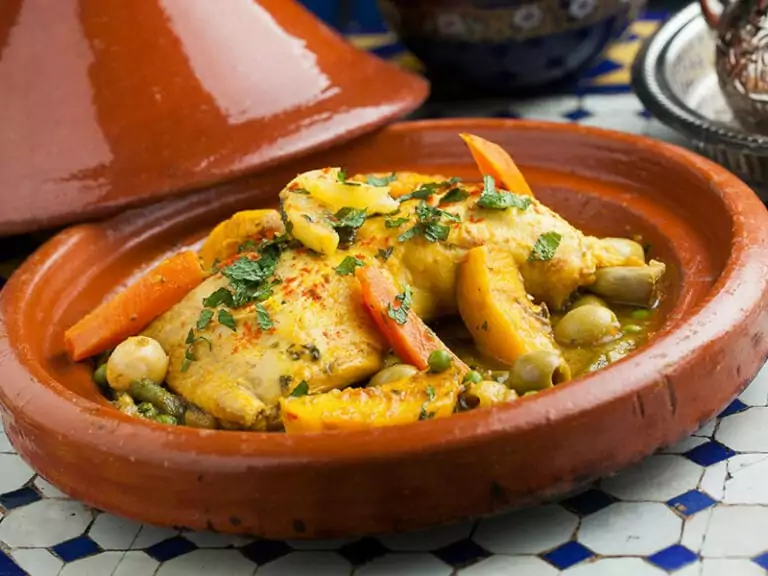
Tajine
Tajine, also known as tagine, is a classic North African stew prepared with meat, vegetables, and fruits, namely olives, apricots, and prunes (dried plums).
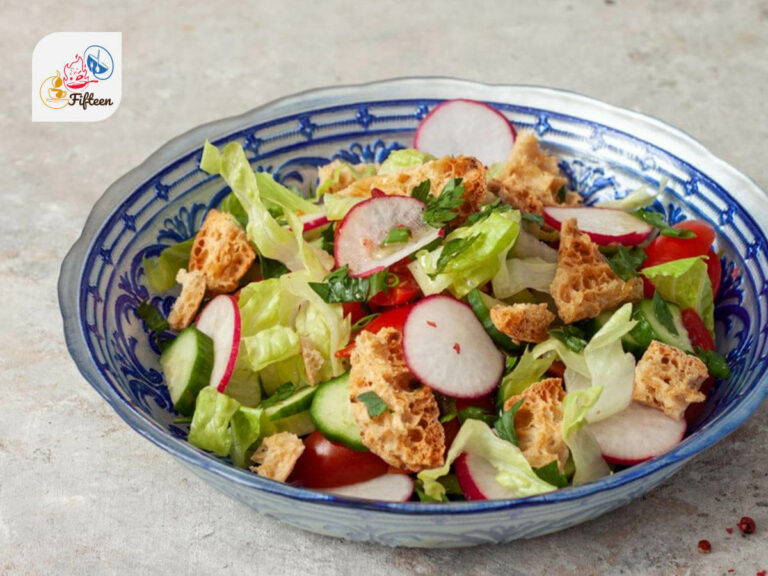
Fattoush
Fattoush is a Levantine salad that combines toasted or fried Arabic flatbread with a mix of fresh greens, vegetables, spices, and sometimes pomegranate molasses.
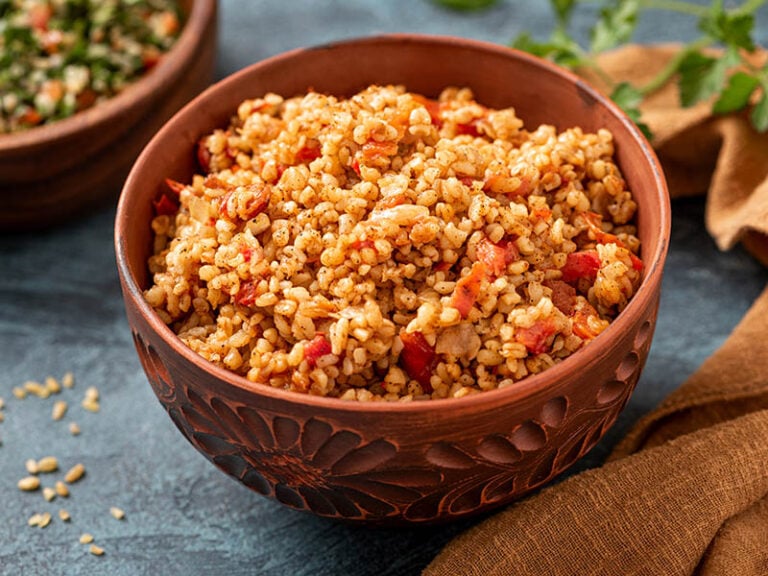
Pilaf
Pilaf, also known as polao, pulao, or pilau, is a well-known Middle Eastern rice dish prepared by cooking rice in a seasoned broth with spices, meat, and vegetables or dried fruits, like raisins, dates, apricots, or figs.
Explore the beauty of these amazing Middle Eastern delicacies, and you will beg for more!
As mentioned above, fruit-based beverages are quite plentiful in the Middle East. You’re going to discover the best of them soon!
Which Middle Eastern Beverages Make Use of Fruits?
Here is a comprehensive list of the best beverages made with fruits in the Middle East.
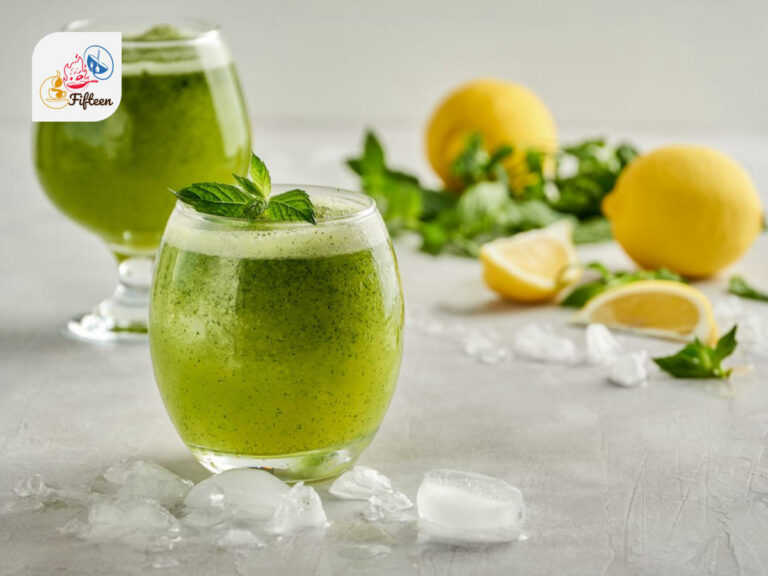
Limonana
Limonana is a type of Middle Eastern lemonade prepared with mint leaves or mint syrup. Its Egyptian variation, known as limoon, is highly famous.
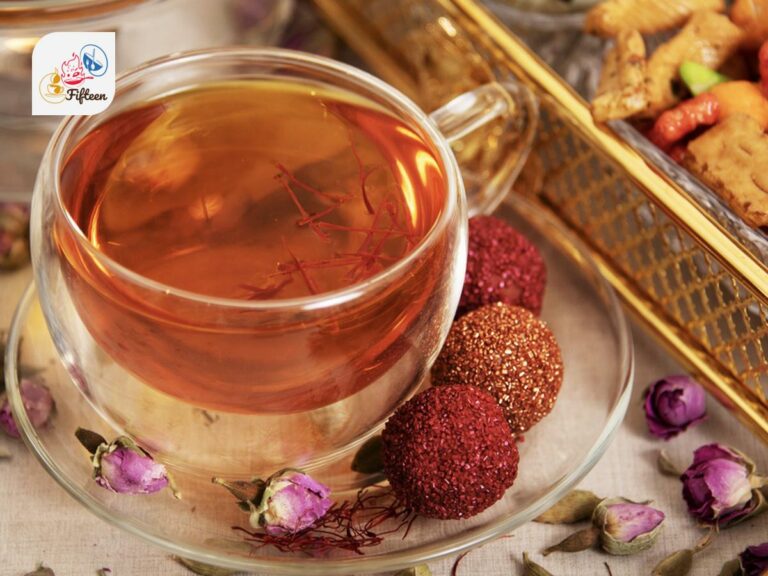
Damnoosh
Damnoosh refers to an array of herbal teas in Iran, which are often flavored with lemon juice and honey.
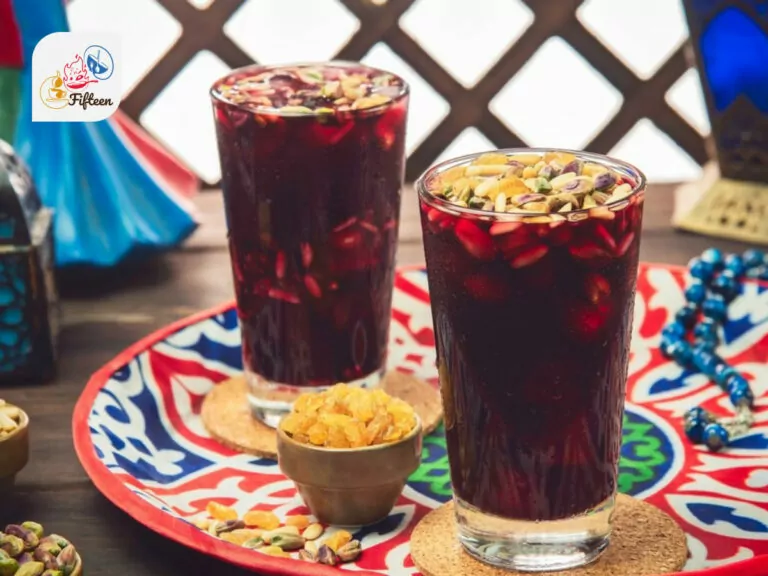
Jallab
Jallab is a distinct Middle Eastern beverage made from date juice, grape molasses, carob (a native plant with a taste similar to chocolate), and rose water syrup.
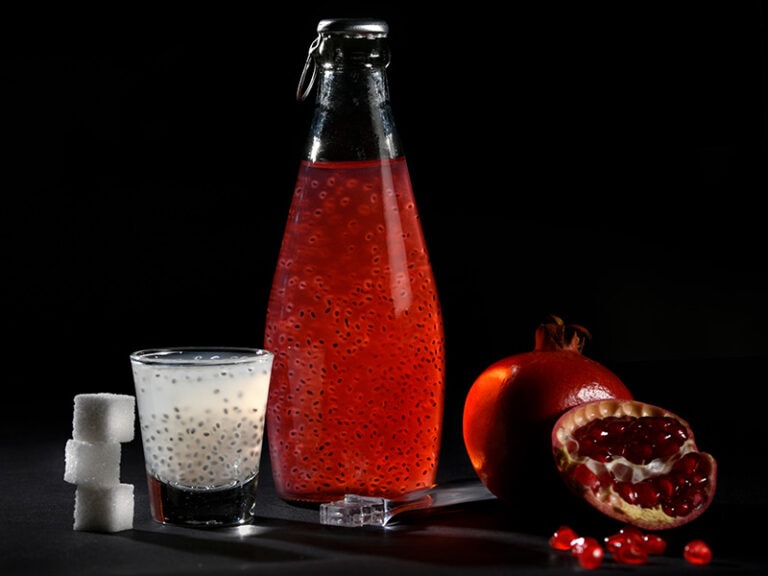
Pomegranate Juice
Pomegranate Juice is a renowned beverage in many Middle Eastern countries, such as Turkey, Israel, Iraq, and Syria.
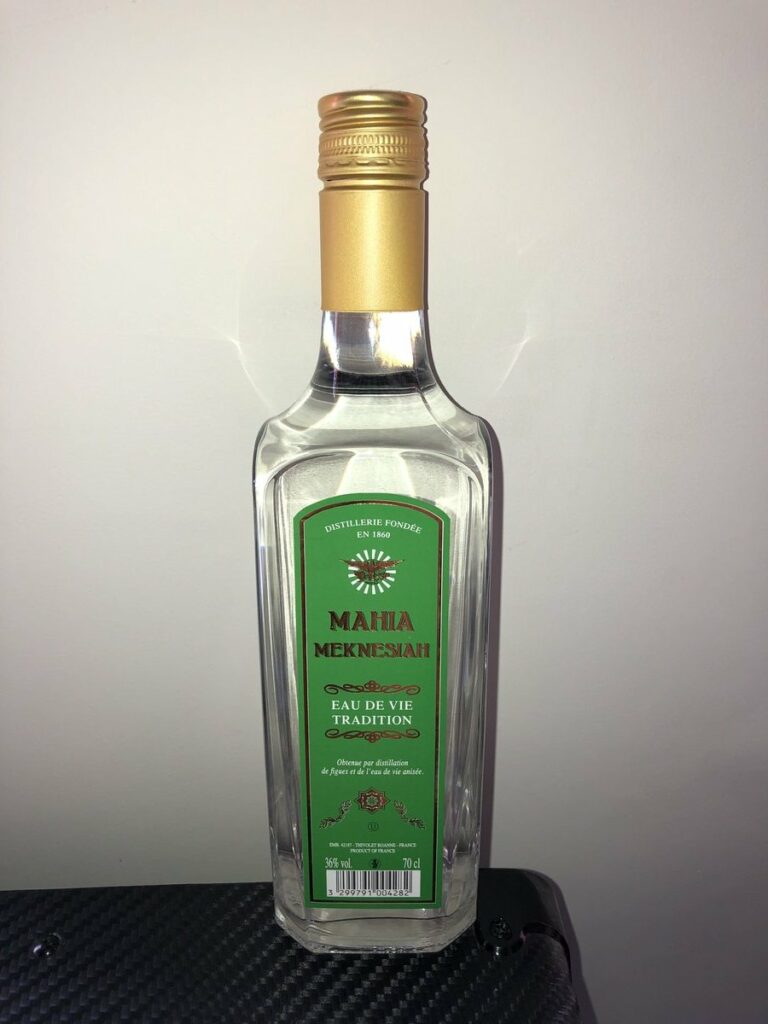
Mahia
Mahia is an affordable alcoholic beverage rooted deep in Moroccan Jewish culture, combining dates or figs with pomegranate juice and other aromatic ingredients.
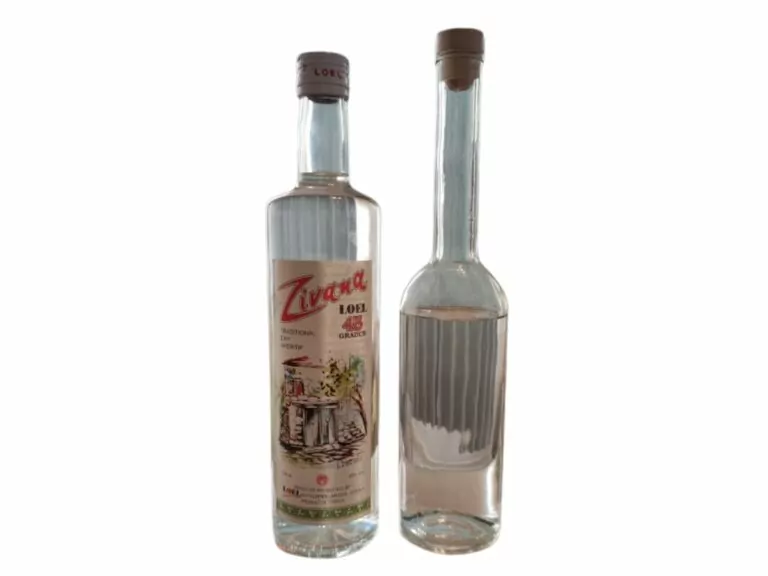
Zivania
Zivania is a colorless brandy from Cyprus that is made from dry wine and pomace, which is the pulpy residue left over after grapes are crushed.
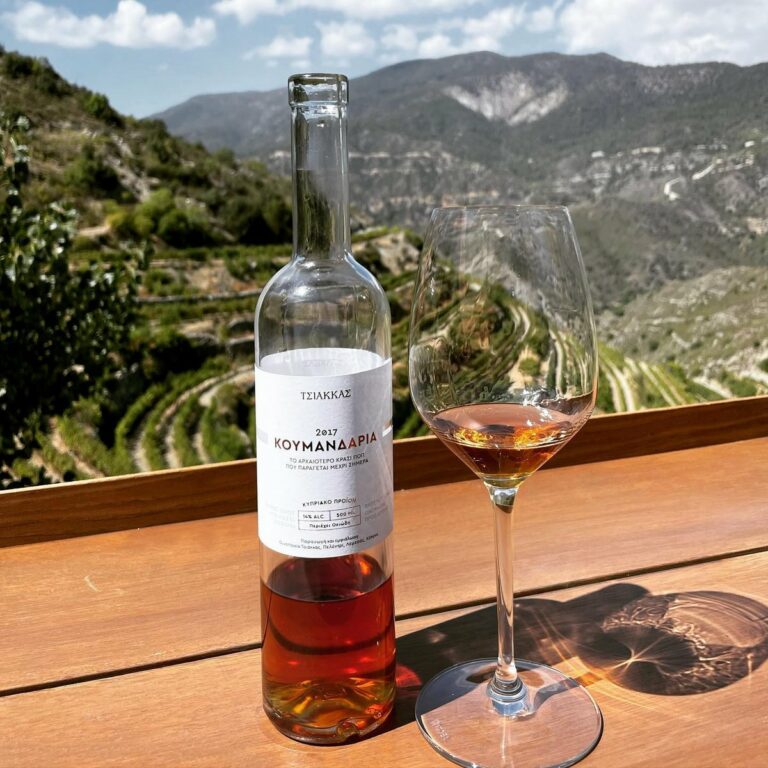
Commandaria
Commandaria is an ancient sweet dessert wine from Cyprus, with sun-dried Cypriot grapes as the main ingredient.

Oghi
Oghi is an Armenian fruit spirit that can include plums, grapes, and other types of fruits. Its flavorings also have orange peel, herbs, and spices.
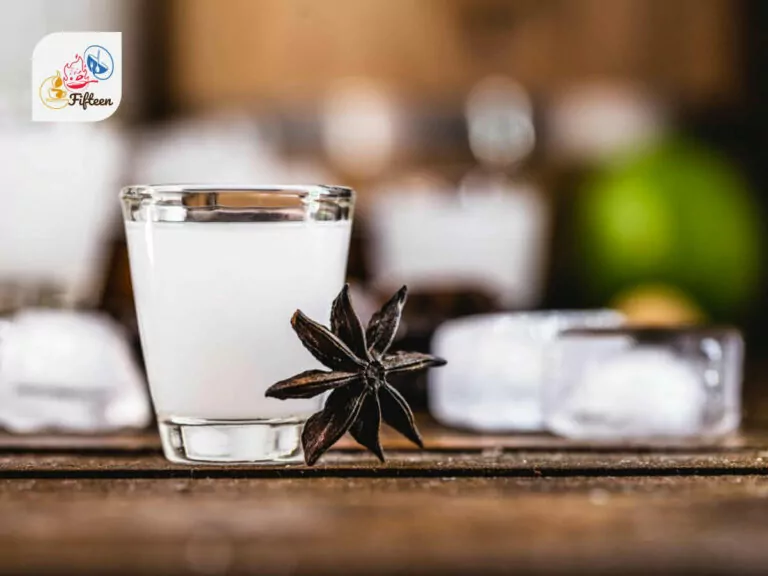
Arak
Arak is a Middle Eastern spirit made with grapes and flavored with aniseed oil.

Qamar al-Din
Qamar al-Din is a traditional Middle Eastern non-alcoholic beverage made with apricot leather. It is a must-have drink for Ramadan.
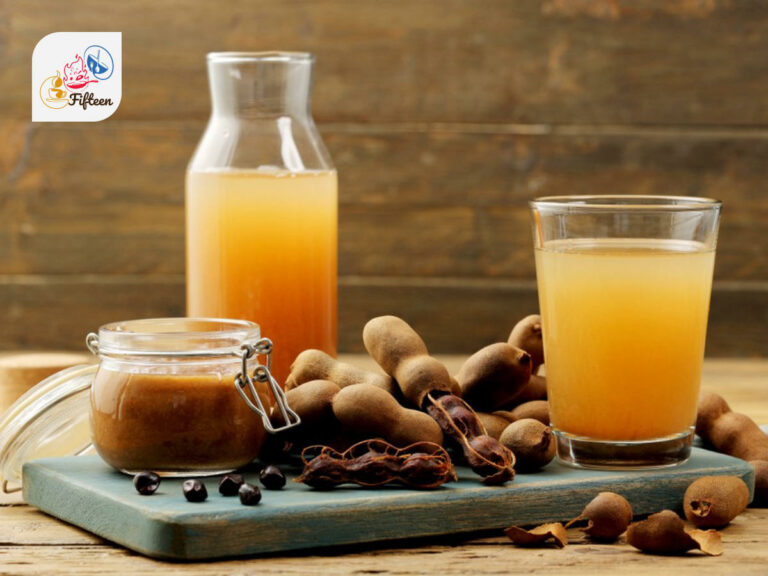
Tamer Hindi
Tamer Hindi is a sweet and sour Middle Eastern beverage made from tamarind paste, sugar, and water.
These options aren’t the only drinks available in the region. There are many other Middle Eastern beverages worth discovering.
Since many people search for both Middle Eastern fruits and vegetables, I will include an extra section on the most beloved vegetables in the region.
What Are the Most Popular Vegetables in Middle Eastern Cuisine?
Scroll down to explore the most widely used vegetables in the Middle East.
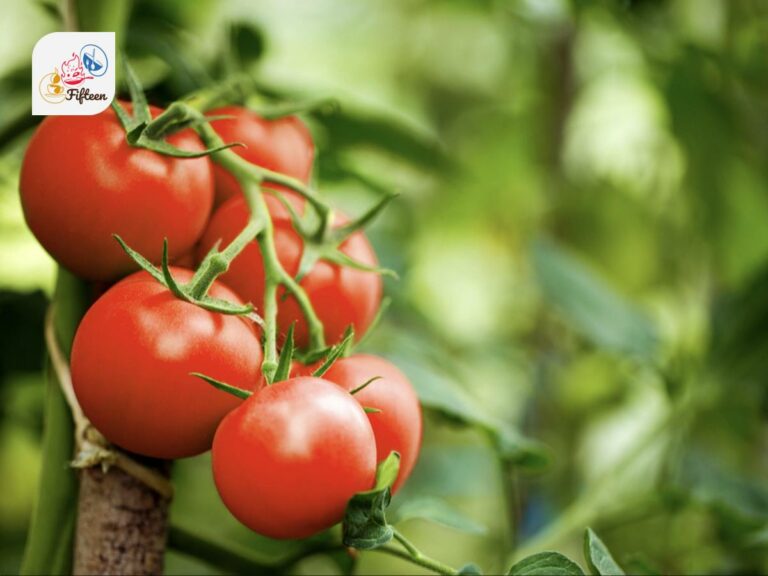
Tomato
Tomato is a staple vegetable used in many Middle Eastern salads, sauces, and stews because of its juicy and sweet-acidic flavor profile.
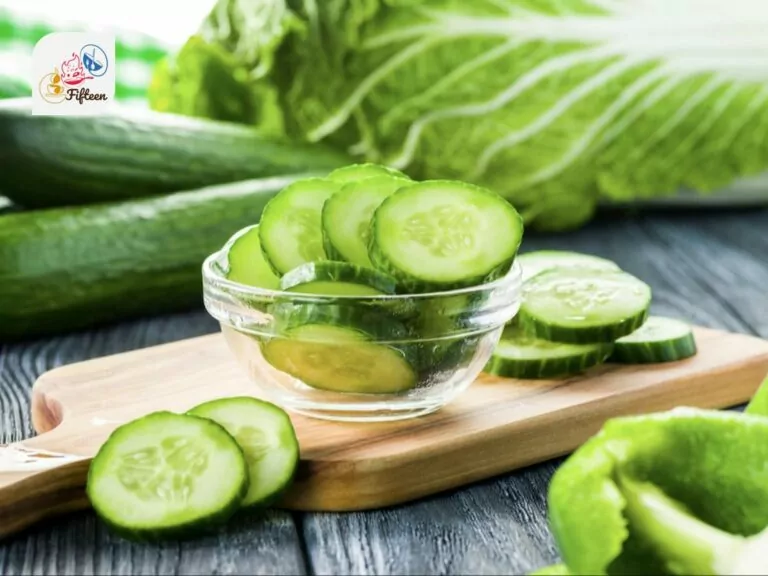
Cucumber
Cucumber is a crisp, refreshing vegetable used in salads and as a garnish for various meals throughout the Middle East.
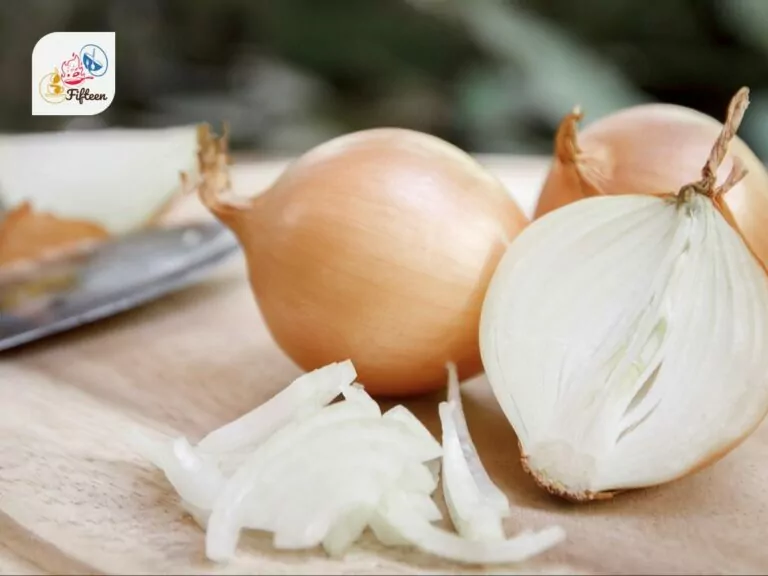
Onion
Onion is an indispensable vegetable in Middle Eastern cooking, providing a flavor base to various dishes, from stews and soups to grilled meats and salads.
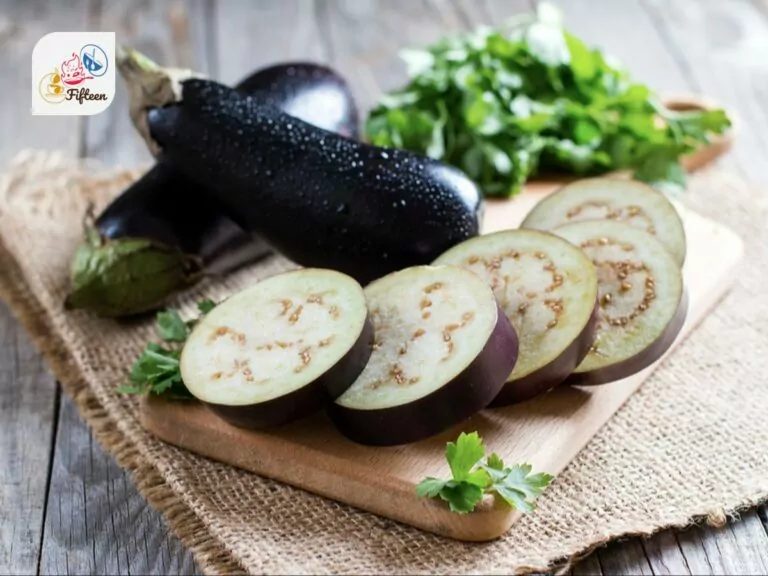
Eggplant
Eggplant is a versatile vegetable in Middle Eastern cuisine, starring in baked and grilled dishes for its meaty texture and ability to absorb flavors.
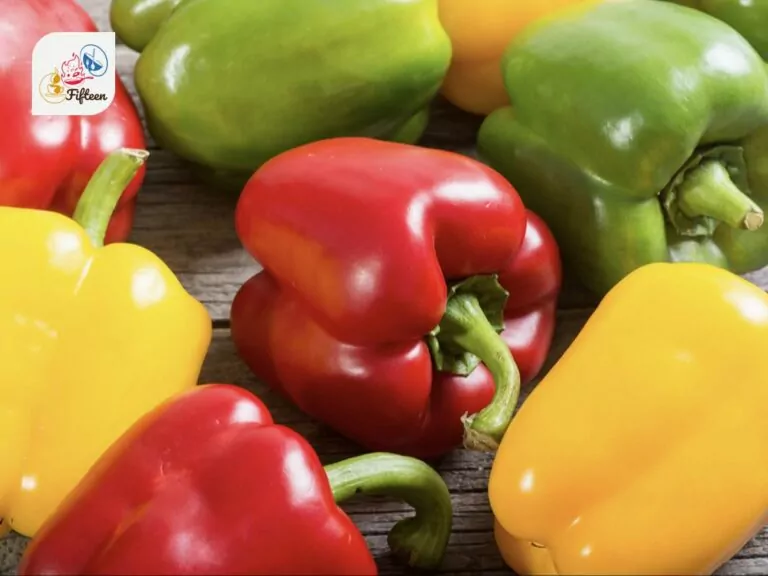
Bell Pepper
Bell pepper, with its sweet and mildly grassy taste, is a colorful addition to Middle Eastern salads and stuffed dishes.
To discover more options that locals use in their cooking, check out these Middle Eastern vegetables. You won’t be disappointed!
Let me know what you think about my fruit suggestions in the comment section. If you want to recommend more fruits, be my guest! Before you leave, please share this list of Middle Eastern fruits with your friends.


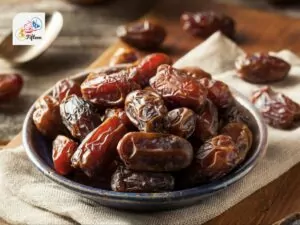
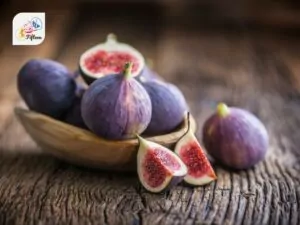
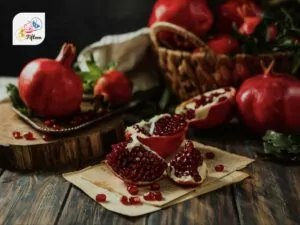
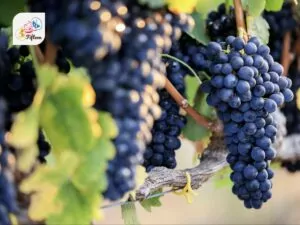
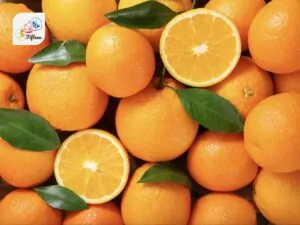
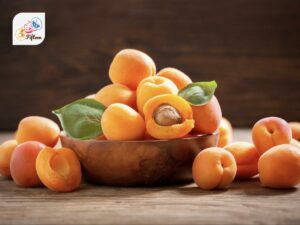
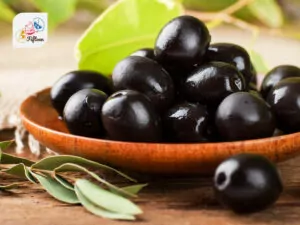
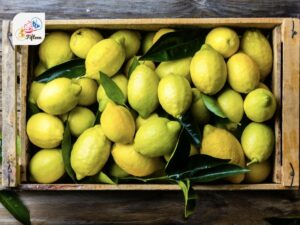
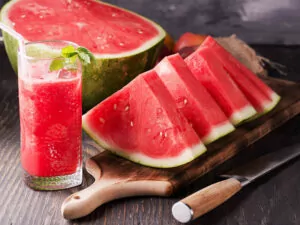
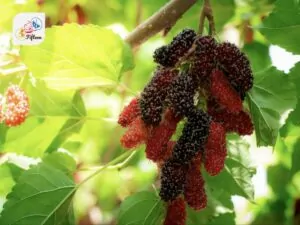
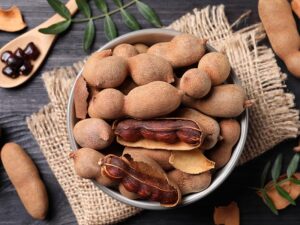
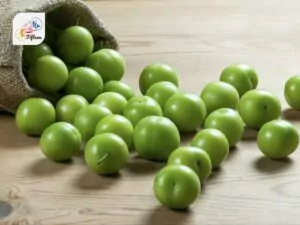
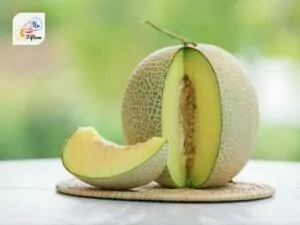
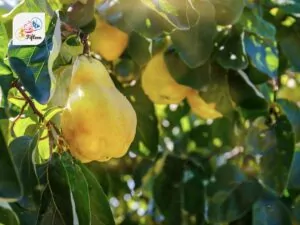
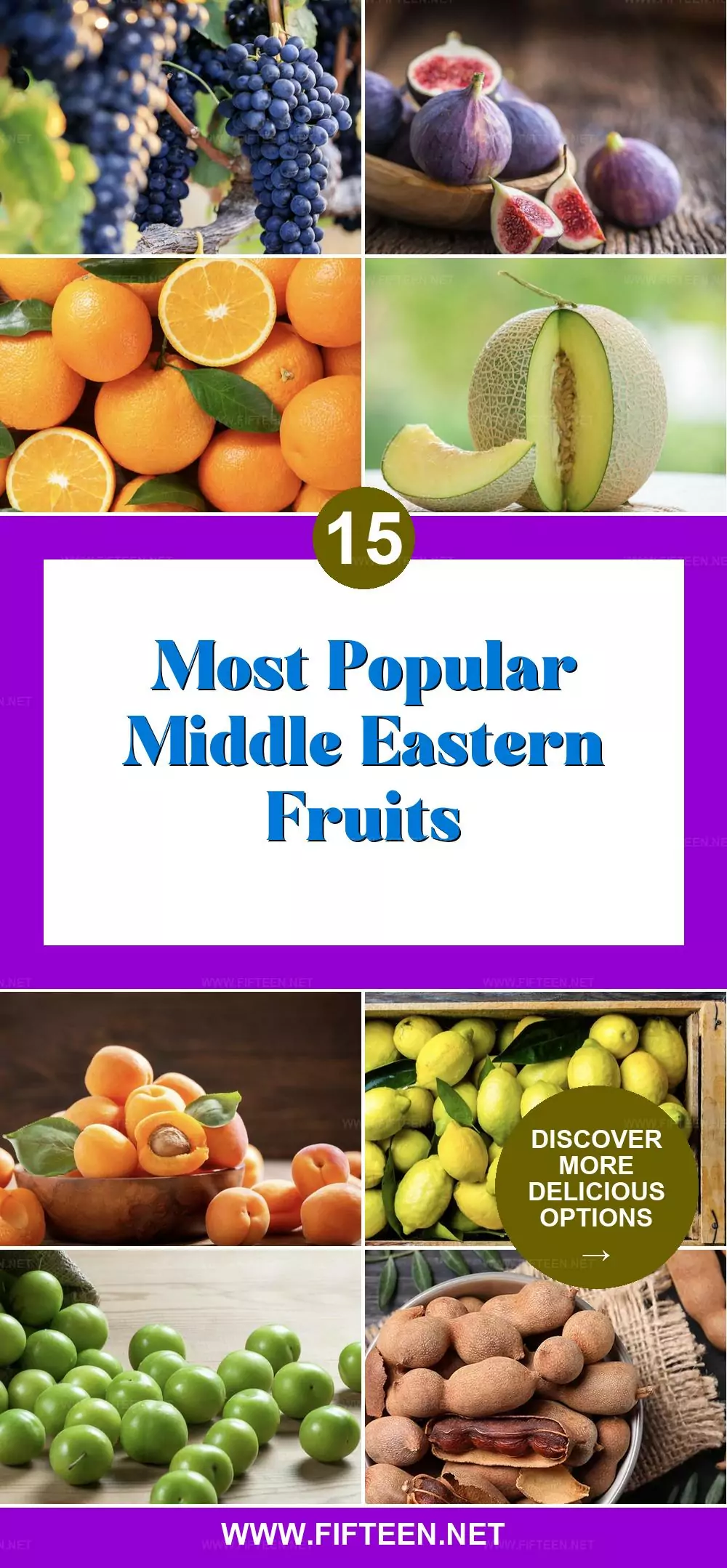
Jamie Scott
Editor in Chief, Senior Content Writer
Expertise
Home Cooking, Meal Planning, Recipe Development, Baking and Pastry, Food Editor, Cooking-video Maker, Western Food Evaluation Expert
Education
Le Cordon Bleu College of Culinary Arts
Local Community College, New York, NY
Jamie Scott is a skilled culinary expert and content creator specializing in Western cuisine. With over 15 years in the culinary field and formal training from Le Cordon Bleu, Paris, Jamie deeply understands how to blend nutrition with delicious flavors. His passion for cooking matches his commitment to making healthy eating accessible and enjoyable.
On Fifteen.net, Jamie brings a fresh perspective to classic dishes and beverages, offering readers insightful recipes, cooking tips, and a fresh view on meal planning that emphasizes taste, health, and simplicity.